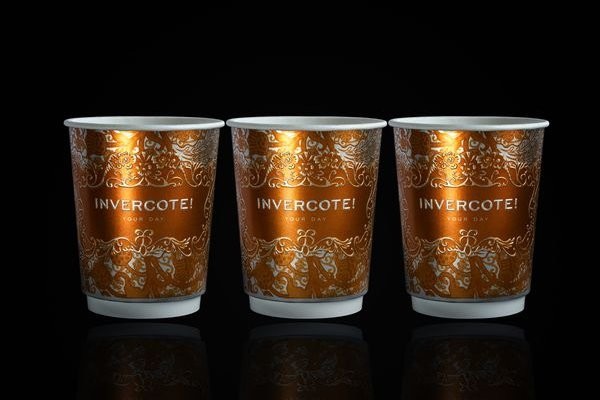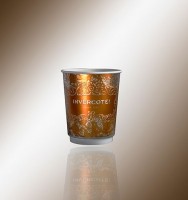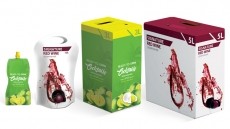Targets US market where debate rages about polystyrene foam
Iggesund Paperboard creates double-walled cup

The pilot project saw an ornamental pattern used on the cup that framed Iggesund’s Invercote brand. The design then covers everything, except the pattern, with an orange colour and raised embossing.
Paper cup specialists SDG
Swiss toolmaker SMR Stanztechnik supplied the high-precision embossing tool and the printing was done by Italian paper cup specialists SDG, Scatolificio del Garda.
Anna Adler, market communications, Iggesund Paperboard told FoodProductionDaily, these types of construction layers are the future of product advancement because they provide insulation, stability, design options, and better print properties.
“For the cup’s inside we chose Invercote coated with polyethylene (PE) and for the outside we used Aluvision, which is Invercote extrusion coated with a thin layer of aluminium foil plus PE on top of the foil,” she said.
“We wanted the metallic feature to achieve elegance and shine even though we only printed with one colour, vintage orange.”
The company believes the product has great potential in the US, where the debate surrounding environmental issues using polystyrene foam materials continues.
A number of US cities, such as Minneapolis and New York are trying to ban the use of polystyrene foam in beverage cups and catering packs.
The proposed Minneapolis ban only targets restaurants, and would go into effect January 1.
Ban on plastic foam
New York City is scheduled to implement a ban in July of 2015. But under its ordinance, the ban on plastic foam takeout containers takes effect only if the city determines recycling won't work.
Adler added the biggest challenge was matching the printed and embossed areas of the product. She said embossing is not common on beverage packaging and yet it creates an ‘exclusive’ feeling.
“To be certain of avoiding any misregister, it was decided to reduce the number of cup blanks per printed sheet from 27 to 24,” said Adler.
“The paperboard’s printability and ability to be finished to a high level of elegance are not the only reasons why Iggesund believes in a renaissance for paperboard-based beverage cups.
“Competing materials such as traditional plastic or polystyrene foam cups create a much higher carbon footprint than a cup made of paperboard with a thin PE coating.”
She said a cup made of PE-coated Invercote has a carbon footprint that is scarcely a quarter the size of the one left by the same cup made of plastic – comparing the weight of the materials used.
“If you add the existence of efficient recycling systems and the fact that the stored bioenergy can finally be recovered, paperboard is an outstanding choice of material,” she added.









